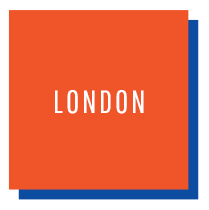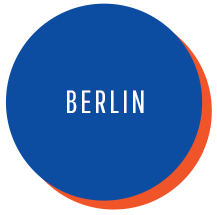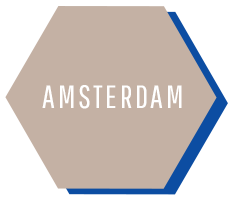AESTHETICS
by Susanne Lanwerd
Aesthetics are essential to life. There can be no cultural or religious encounter without aesthetics. In our research on the urban sacred and its presentation in this exhibition, we have drawn on an aesthetics approach.
Let me start with a fresh definition. Aesthetics are based on the critical tools of the imagination; they refine sensory perceptions and impart complexity – all of which make it possible to shift one’s perspective. Examining how this definition relates to other conceptions of aesthetics and their historical contexts is a task that reveals the very boundaries and strategies of Western art and the cultural industry.
In the context of the aisthetike episteme in Greek antiquity, aesthesis denoted the scholarly approach to perception and the senses. Today “Wahrnehmungspsychologie”, the psychology of perception, denotes the study of the senses or perceptions. Another important concept associated with aesthetics was the early nineteenth century romantic idea of Kunstreligion, art-as-religion, which affirmed that an aesthetic experience resembled a religious experience. Last but not least, many people, including some scholars, artists and museum professionals, closely associate aesthetics with beauty. Developed within the philosophical aesthetics of the early 1800s, this conception is still significant for large sections of the art and cultural industries. Why is this? Does abstracting the histories and biographies from individual objects and works of art make them easier to appreciate? From this perspective, questions about who produced them, who collected them, and when and why they were acquired by museums barely feature. This de-contextualisation of the objects, in turn, forms the basis for their arbitrary curation and assembly within the framework of possible exhibitions.
There has been much criticism of this approach since the publication of Peter Vergo’s The New Museology.[i] Critics have stressed the role which exhibitions have played in the production of knowledge and meaning. Exhibitions do not just serve to pass on knowledge; they create it anew. In The Urban Sacred, the production of new meanings is central to the compilation, selection and commentary on photographs of religious encounter, precisely because they enable stereotypes to be challenged.
Exhibitions which address complex issues, such as religions or religious encounter, need nuanced sensitivity. Caution is more important here than conceptions of beauty or the conflation of religious and aesthetic experience. It is the complexity of aesthetics that forms the basis for our exhibition, in opening up the possibility of alternative understandings. How does this work? The aesthetics approach implies an attitude of respect and attentiveness towards people and things. This attitude goes hand in hand with modesty and openness, and constitutes the conditio sine qua non for cultural and religious encounter.
The Urban Sacred exhibition provided the project team with the opportunity not only to explore the aesthetics of exhibiting photographs in combination with the production of new knowledge about religious encounter, but to work with photographers who use a practice-based artistic approach. Three photographers of the Folkwang School of the Arts in Essen (Germany), Nina Gschlössl, Henriette Kriese and Tania Reinicke, visited the research sites in Amsterdam, Berlin and London and made images and videos which are displayed in the exhibition.
Photographs are constantly shifting between documentation and interpretation. According to Susan Sontag, a photograph contains traces of reality yet also an interpretation of that reality. Although a photograph captures a moment, it is only one portrayal of the moment; it is multifaceted. Or, to put it in the words of the artist, Zoe Leonard: Is a photograph an object or an image, or is it a way of seeing?[ii]
The views of the photographers presented in our exhibition help us as researchers to engage with the challenging experience of multiple perspectives. The artistic approach differs considerably from historical analysis, for example. A photographer’s intentionally blurred image of the details of a religious building contrasts with the facts and figures of scholarly studies of religions and the material gathered from interviews in field research.
Researchers from the universities of Lancaster, Utrecht and Bochum/Berlin, Steph Berns, Daan Beekers and myself, have scrutinised religious icons – buildings, signage, clothing and events – in the cities of Amsterdam, Berlin and London. Religious icons[iii] constitute both a model of social reality (by mirroring it), and a model for social reality (in being agents which evoke and direct knowledge, experiences, and actions). From the outset of the project, the research team has advocated an understanding of religion that synthesizes semiotic-communicative, action-oriented, spatial and aesthetic approaches in a conceptual framework.[iv]
The work of the photographers together with our own research provides an abundance of rich material that can also be analysed from the perspective of migratory aesthetics. Developed by Mieke Bal and Griselda Pollock, this promising concept encompasses three levels of aesthetics: the aesthetics of the everyday (food, clothing, sounds, music) that become signs we can read to track the experience and transformations of migration; the aesthetics of the transformation of ideas and intellectual traditions as they migrate with peoples forced to change location; and the aesthetics of difference and otherness that can either be held at a distance as foreign or embraced as invigorating and productive.[v]
Given the fact that the meaning of religious icons is not as stable as one might imagine, the exhibition invites visitors to engage with images and objects in a new or unfamiliar manner. Presented via photographs, texts, objects and audio recordings, the sites and settings of Amsterdam, Berlin, and London make themselves known. They confront us with their urban histories, religious diversity, religious and cultural encounters, and iconic forms. These dense religious icons – especially when they are locally situated – may be understood as “actors” who tell us stories.[vi] What are the stories about?
Take for instance the Engelbecken or Angel’s Pool in Berlin Kreuzberg, which is unique as an urban landscape as well as a landscape of history. It constitutes the focal point of the Berlin setting. Berlin’s Kreuzberg is home to the largest Turkish immigrant community in the world; some 40 percent of Kreuzberg’s residents are Turkish Germans.[vii] But migration began centuries earlier with the arrival of the Huguenots and, later on, migrants from Poland and Silesia who created the Angel’s Pool (the former Luisenstädtischen Kanal). This history helps explain why so many religiously diverse icons can be found nearby. The exhibition presents some of these icons – both visible and inconspicuous – by following their traces through past and present, and by questioning their impact on the future.
The diversity of the cities’ urban sacred is refracted through aesthetics as a critical tool of the imagination, refining our sensory perceptions, imparting complexity, and opening us up to new perspectives. In addition to presenting new information about religion in the capital cities of Amsterdam, Berlin and London, by displaying varying artistic and scientific perspectives on the iconic, the exhibition challenges and sharpens understanding of religious icons and the encounters they generate in urban spaces.
[i] Vergo, Peter (ed.) (1989): The New Museology, London
[ii] See Zoe Leonard: The Fae Richards Photo Archive, in: Museum Folkwang (Ed.): (Mis)Understanding Photography. Am Exhibition. Göttingen 2014, p. 140
[iii] See Volkhard Krech „What is a religious icon?” in this volume
[iv] See the essays of Kim Knott, Steph Berns, Birgit Meyer, Daan Beekers and Volkhard Krech in this volume
[v] See http://reporter.leeds.ac.uk/press_release/current/migratory_aesthetics.htm, http://www.exitmedia.net/prueba/eng/articulo.php?id=266; Durrand, Sam / Lord, Catherine M. (Ed.): Essays in migratory aesthetics: Cultural practices between migration and art-making. Amsterdam 2007. Lanwerd, Susanne: Was versteht man unter „migratory aesthetics“? In: Bluche, L. / Gerbich, C. / Kamel, S. / Lanwerd, S. / Miera, F. (Hg.): NeuZugänge. Museen, Sammlungen und Migration. Eine Laborausstellung, Bielefeld 2013, pp. 99 -111
[vi] Latour, Bruno: Reassembling the Social: An Introduction to Actor-Network Theory. Oxford University Press 2005.
[vii] See Turam, Berna: Gaining Freedoms. Claiming Space in Istanbul and Berlin. Stanford University Press 2015


